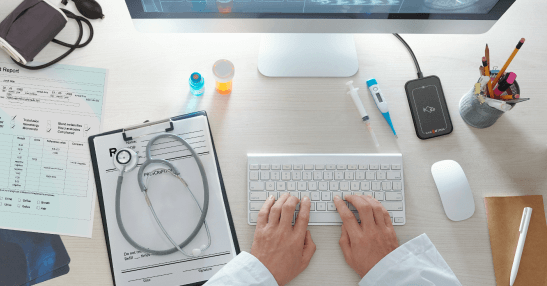3 Ways Logical Access Control Helps Health Networks Protect Patient Data
Speak With An Expert
Hola mundo alerta alerta
In 2023, more than 540 healthcare organizations reported data breaches to the Department of Health and Human Services’ Office for Civil Rights. In total, more than 112 million individuals’ data was put in harm's way.
While data breaches are dangerous in any industry, they can be catastrophic in sectors like healthcare that deal with highly sensitive patient data. A single breach can lead to thousands of dollars in fines, as well as the loss of patient trust.
With the threat of data breaches looming, healthcare leaders can’t allow gaps in their physical or digital security infrastructure. This is what makes logical access control so valuable. By investing in the security mechanisms used to control and restrict access to digital resources, healthcare organizations can protect themselves from cyberattacks and keep patient data safe.
Cybercriminals often target healthcare organizations due to the lucrative potential of patient data. Even small healthcare organizations house information for hundreds of thousands of patients, including social security numbers, health insurance information, test results and much more. With this information in their possession, hackers can execute medical identity theft, using stolen information to purchase expensive medications and medical services. Or they can conduct a ransomware attack, leveraging the threat of releasing sensitive patient data to collect money from the organization.
Healthcare organizations also tend to have less robust cybersecurity protections than organizations in other industries that handle sensitive data, such as financial institutions. Compared to financial data breaches, medical breaches are much more likely to continue undetected for long stretches of time, giving hackers plenty of time to penetrate systems, steal information and cover their tracks.
That’s not to say progress isn’t being made. Many healthcare organizations have focused on building out their internal cybersecurity teams and improving digital health. IT teams generally concentrate on removing access roadblocks for clinicians while protecting their organizations from risk. Meanwhile, compliance and privacy teams work to protect highly sensitive patient data and abide by relevant regulatory frameworks.
However, a key piece of the puzzle is missing. Many IT teams struggle to manage data and record access in complex hybrid and remote healthcare environments. When it comes to delivering care, speed and efficiency are the name of the game, which can often clash with the caution that’s necessitated by most compliance protocols. Healthcare organizations need to achieve greater visibility into information access throughout the organization without causing hurdles for clinicians.
Logical access control refers to the security mechanisms and policies that help manage access to computer networks, systems and data. Logical access control differs from physical access control, which focuses solely on access to buildings or rooms.
Here are three benefits that healthcare access control can provide:
Logical access control eliminates the need for passwords, which are one of the primary causes of data breaches. For example, busy clinicians can inadvertently stay logged into their workstations after walking away, leaving confidential patient information vulnerable.
Instead of worrying about logging in and out of multiple applications on the job, clinicians can rely on single sign-on authentication solutions that connect back to a centrally managed network. This way, they can reduce the risks associated with leaving their devices unattended and empower leadership to more quickly identify unexpected interactions and log-in attempts.
Healthcare is governed by a sometimes overwhelming web of federal and state regulations, the most notable of which is the Health Insurance Portability and Accountability Act (HIPAA). As a part of HIPAA’s security rule, covered entities must implement administrative, physical and technical safeguards to protect patient information. Logical access controls satisfy these requirements, ensuring that only authorized individuals can access digital patient records.
Patients don’t need to understand the ins and outs of logical access control, but they’ll be able to tell the difference in the quality of care they receive. Clinicians that used to spend countless minutes struggling to view patient charts and care history will be able to quickly pull the information they need and spend more time on patient visits. Instead of rushing their patients through the appointment, they will take more time to explain complex medical information and answer questions.
Seamless logical access control requires the right hardware and a partner experienced with the complex needs and requirements of healthcare organizations.
Leverage the power of rf IDEAS readers to eliminate passwords for your mission-critical applications. This, coupled with streamlined authentication tools to workstations and medical devices can help ensure HIPAA compliance, improve the patient experience and keep sensitive data protected.
Reach out to rf IDEAS today to learn more about which healthcare access control solutions are best for you.